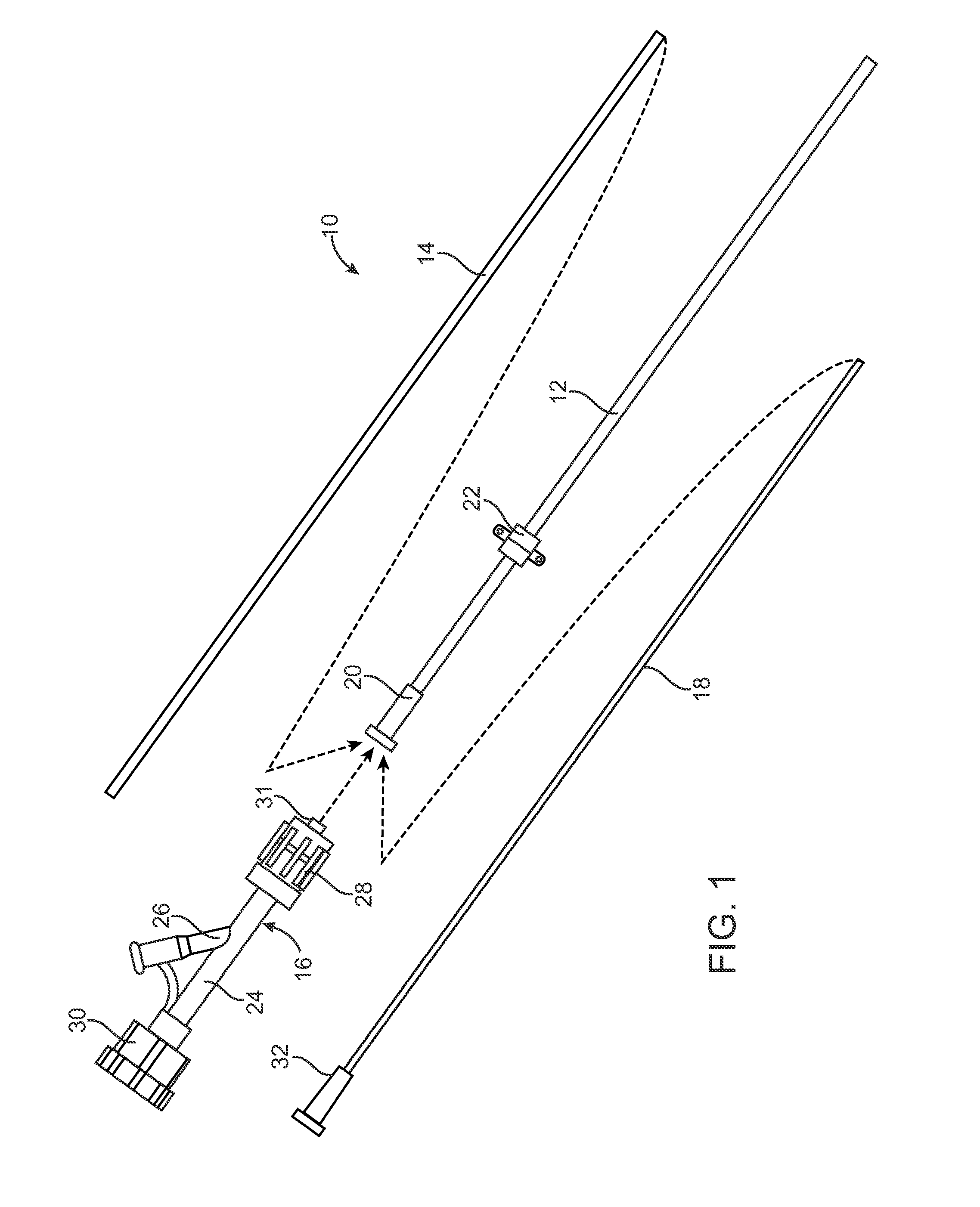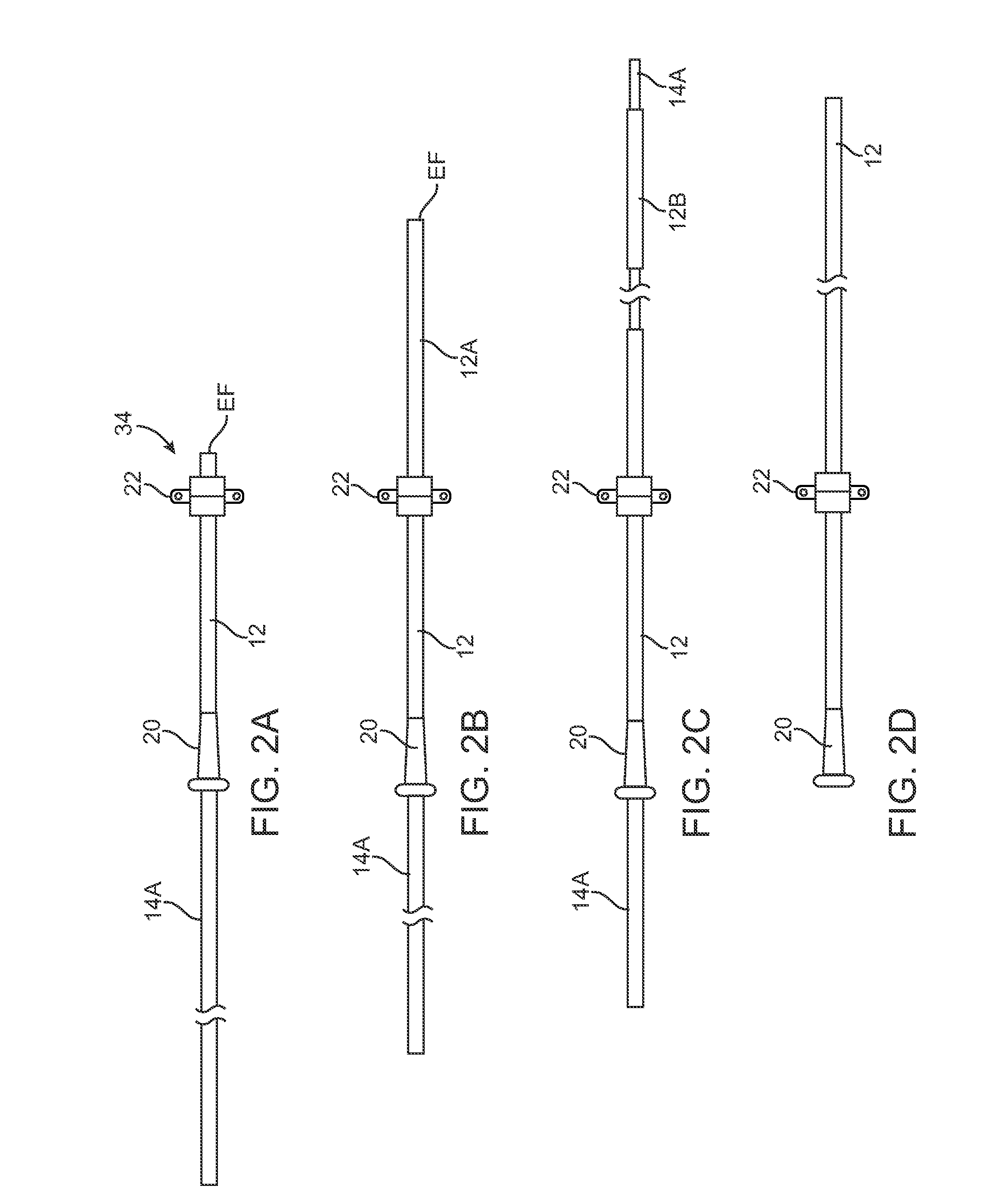Vascular sheaths and methods for their deployment
a technology of vascular sheaths and sheaths, which is applied in the field of medical methods and equipment, can solve the problems of tissue surrounding the tract to fibrose and resistance to healing, and achieve the effect of minimizing the profile of the access system
- Summary
- Abstract
- Description
- Claims
- Application Information
AI Technical Summary
Benefits of technology
Problems solved by technology
Method used
Image
Examples
Embodiment Construction
[0044]Systems and methods according to the present invention provide minimally invasive and minimally traumatic access to blood vessels and other body lumens. Blood vessels may be arteries or veins, and other body lumens include the peritoneum for peritoneal dialysis, the gastrointestinal tract, and the like. Percutaneous refers to passing a sheath and optionally catheter of the system through the patient's skin into the blood vessel or other body lumen beneath a layer of tissue under the skin.
[0045]Systems of the present invention will comprise at least the sheath and an introducer for positioning or advancing the sheath through the skin penetration to the target body lumen. As the sheath will often be left in place for extended periods of time, often days, weeks, or even longer, the sheath will preferably have an anchor or attachment to the skin. The sheath will also usually include a luer or other connector at or near its proximal end to permit attachment to a fluid source, a hem...
PUM
 Login to View More
Login to View More Abstract
Description
Claims
Application Information
 Login to View More
Login to View More - R&D
- Intellectual Property
- Life Sciences
- Materials
- Tech Scout
- Unparalleled Data Quality
- Higher Quality Content
- 60% Fewer Hallucinations
Browse by: Latest US Patents, China's latest patents, Technical Efficacy Thesaurus, Application Domain, Technology Topic, Popular Technical Reports.
© 2025 PatSnap. All rights reserved.Legal|Privacy policy|Modern Slavery Act Transparency Statement|Sitemap|About US| Contact US: help@patsnap.com



